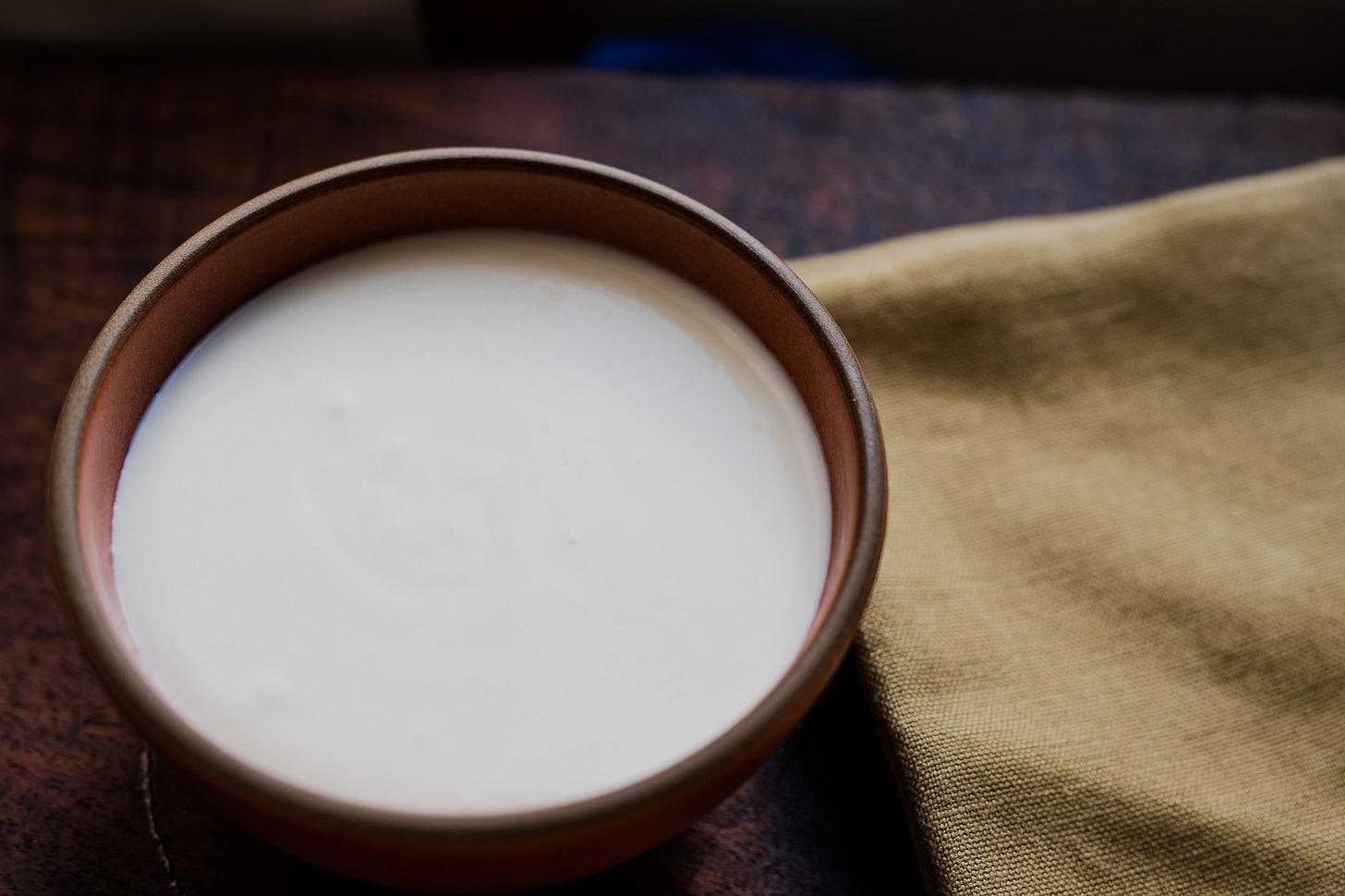The first time I saw crème fraîche made I was shocked. Heavy cream left out on the counter overnight (which contradicted all my understandings of food safety up to that point) was transformed into something complex, rich yet light, and delicious. It seemed like casual magic at the time and I felt like my understanding of the world was incomplete. Seeing crème fraîche made was one of many moments that made me pay closer attention to my food.
The Science
Crème fraîche is made by lightly fermenting heavy cream with lactic acid bacteria. These dairy fermenting microbes have been cultivated and isolated to make many commercial dairy products including yogurt, buttermilk and crème fraîche. The typical mix of lactic acid bacteria strains used in commercial dairy products is Lactobacillus bulgaricus and Streptococcus thermophilus. You’ll often find these two microbes listed in the ingredients of store-bought yogurt. Lactic acid bacteria convert the naturally occurring lactose sugars in dairy into lactic acid, resulting in the characteristic sour tang of yogurt. The increased acidity also causes the casein dairy proteins to restructure, separating their original bundles and linking them into a loose network which restricts the movement of water and other molecules. This network is what causes fermented dairy products like yogurt and crème fraîche to thicken.
For more in-depth reading into the processes of dairying, I recommend reading The Art of Fermentation by Sandor Katz or On Food and Cooking by Harold McGee.
Why Culture?
For those with experience in dairying or culturing dairy products at home, crème fraîche is no revelation, but for the novice it can offer a compelling first glimpse into the process. Mixing a little yogurt or buttermilk (which contain active dairy cultures) into a pint of heavy cream creates a living, breathing and progressively souring ecosystem. I find this process to be deeply satisfying and exciting. Maybe I enjoy the waiting game of it, of revisiting my creation as it thickens on its own schedule. I definitely enjoy the jar jiggling to check viscosity.
Culturing crème fraîche is an easy introduction to culturing dairy products that also invites us to pay attention to the small changes that occur in our kitchen and in our food. Like making sourdough, creating crème fraîche allows us to tune in to some of the beneficial food microbes that have been cultivated for countless generations.
Making Crème Fraîche
Keep reading with a 7-day free trial
Subscribe to Notice! to keep reading this post and get 7 days of free access to the full post archives.




